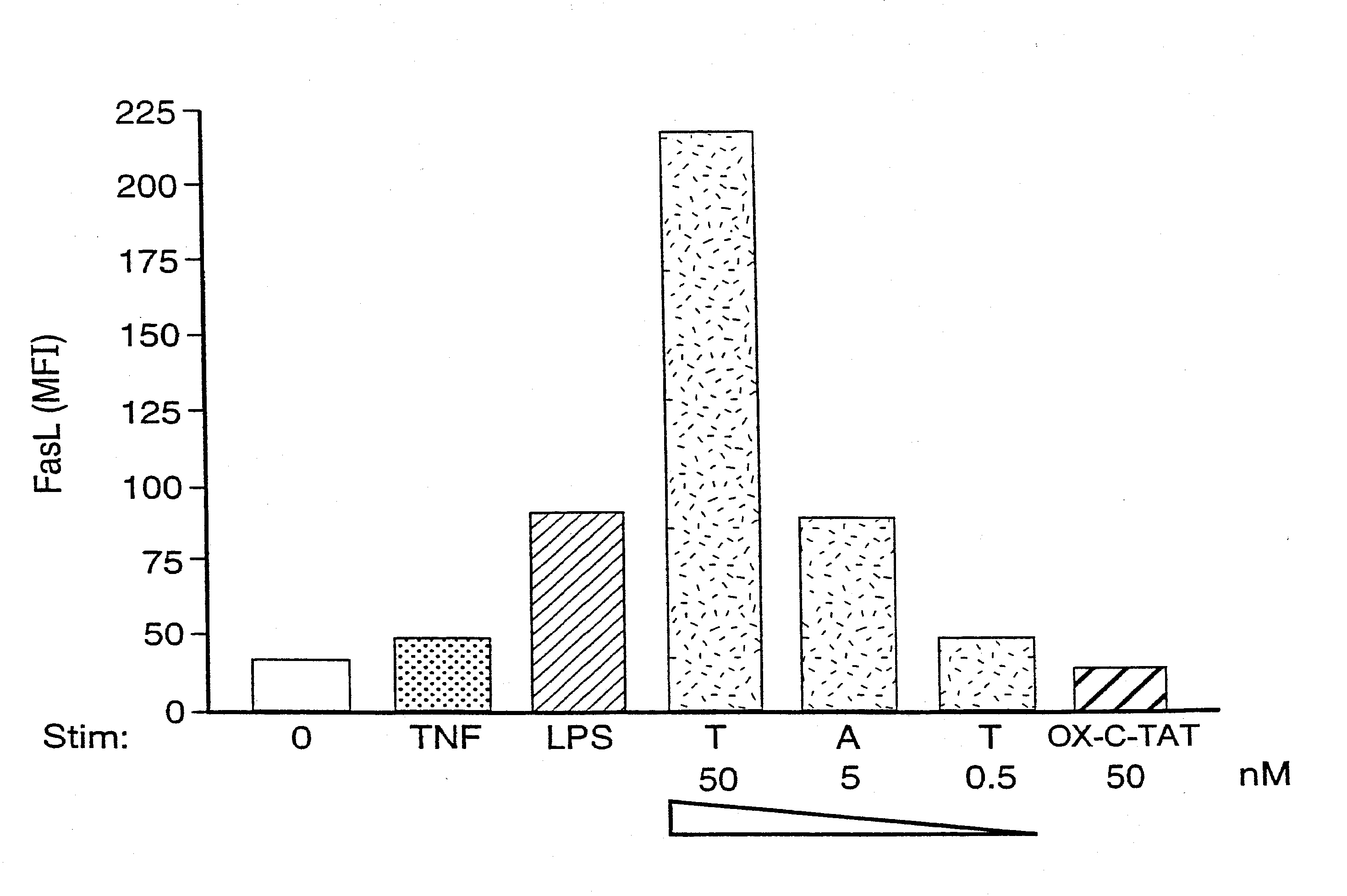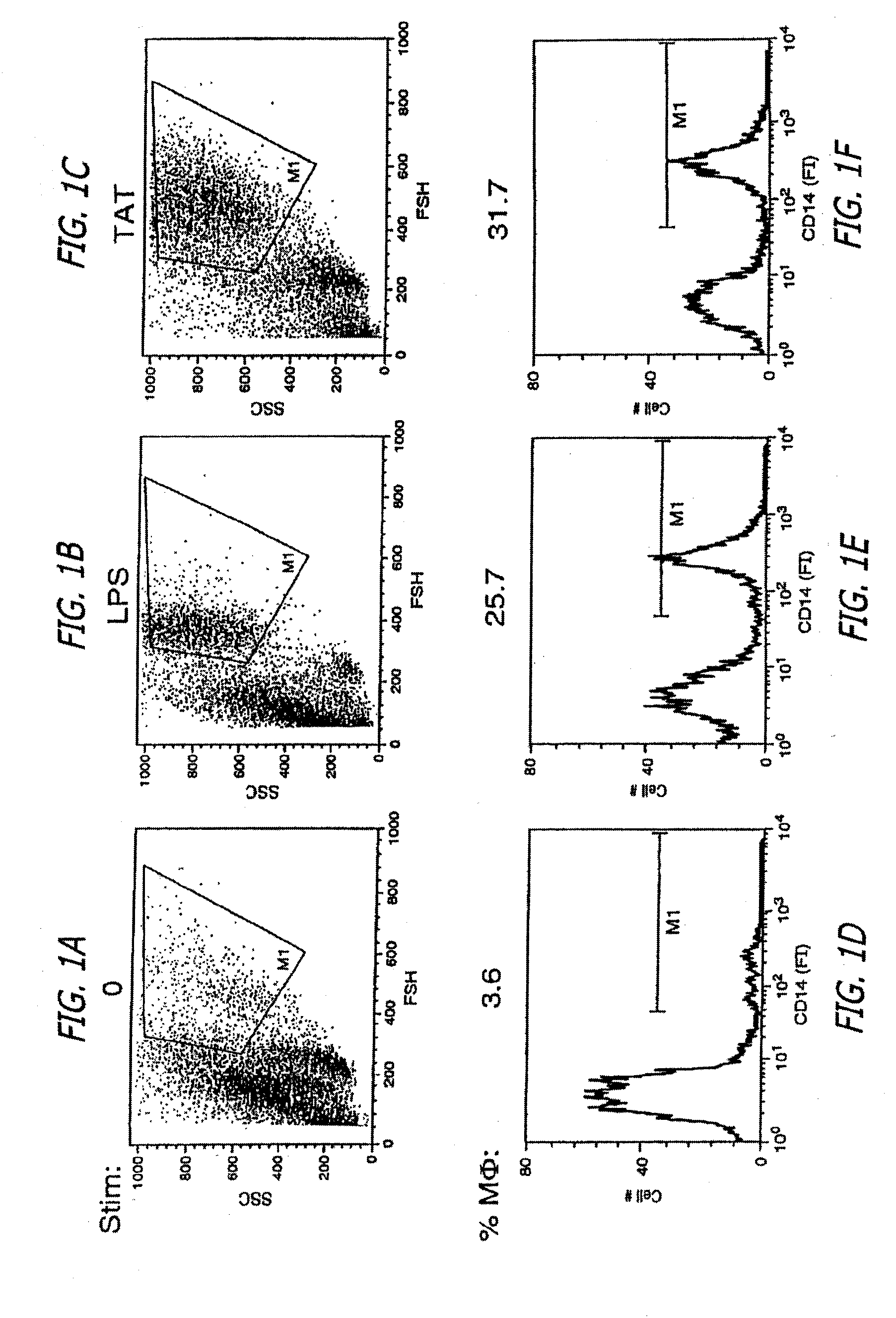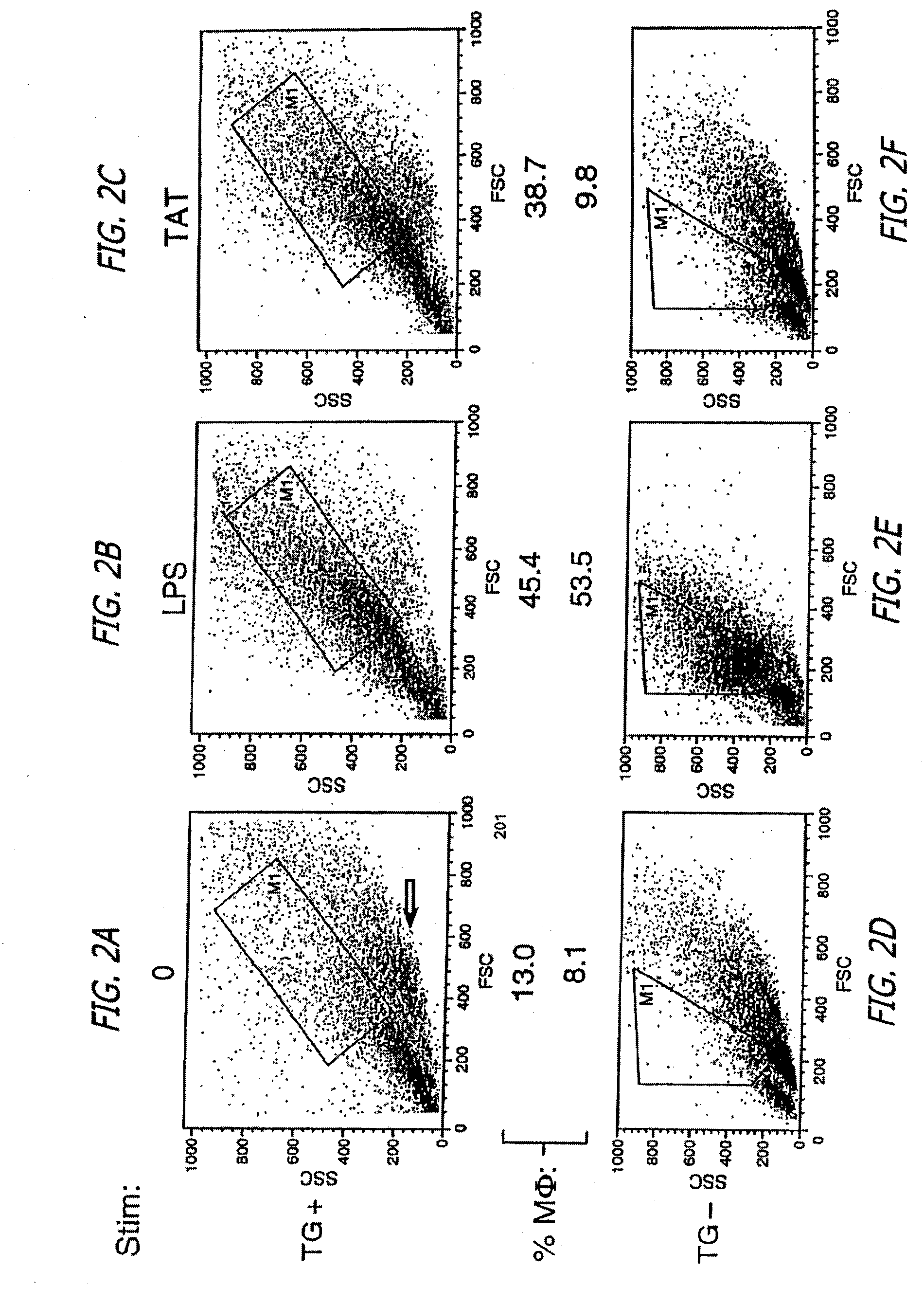Vaccines and immunotherapeutics derived from the human immunodeficiency virus (HIV) transactivator of transcription protein for the treatment and prevention of HIV disease
- Summary
- Abstract
- Description
- Claims
- Application Information
AI Technical Summary
Benefits of technology
Problems solved by technology
Method used
Image
Examples
Embodiment Construction
[0045] For the purposes of clarification, and to avoid any possible confusion, the trans-activating (Tat) proteins of the present invention will be referred to hereinafter as either “C-Tat” when conventional immunosuppressive Tat protein is intended, “ox-C-Tat” for chemically oxidized Tat protein, “IS-Tat” when the immunostimulatory Tat protein found in long-term non-progressors is referred to, or “Tat” when both forms of Tat protein are included.
[0046] The present invention provides anti-lentivirus vaccines and immunotherapeutics (specially anti-Human Immunodeficiency Virus (HIV) vaccines and immunotherapeutics); for preventing and treating HIV infection, and a related in vitro ultra-sensitive, macrophage trans-activator of transcription (Tat) bioassay for assessing Tat immunosuppressant activity. The vaccines and immunotherapeutics of the present invention can be made from a variety of Tat sources. In one embodiment of the present invention the C-Tat is derived from cells infecte...
PUM
 Login to View More
Login to View More Abstract
Description
Claims
Application Information
 Login to View More
Login to View More - R&D
- Intellectual Property
- Life Sciences
- Materials
- Tech Scout
- Unparalleled Data Quality
- Higher Quality Content
- 60% Fewer Hallucinations
Browse by: Latest US Patents, China's latest patents, Technical Efficacy Thesaurus, Application Domain, Technology Topic, Popular Technical Reports.
© 2025 PatSnap. All rights reserved.Legal|Privacy policy|Modern Slavery Act Transparency Statement|Sitemap|About US| Contact US: help@patsnap.com



